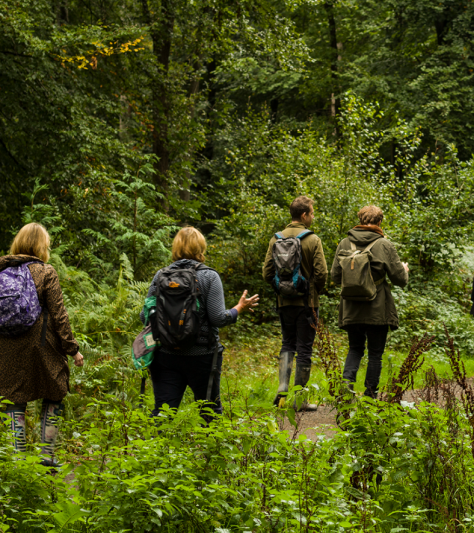Happy cattle, shelter belts and a burgeoning sawmill business
One farm's experience of the benefits of agroforestry for beef cattle in Wales.
Pentre Bach Farms, Pontypool & Llantarnam, Wales
Organic Aberdeen Angus herd
Soil Association Number: G465
Background
Pentre Bach Farms is managed by Steve & Sara Warman. It consists of Nant-y-Gollen, Pontypool in the Brecon Beacons (79 acres (32 ha) with common access) and Pentre Bach, Llantarnam, Cwmbran (213 acres (86 ha)) Both are grass systems with areas of broadleaved woodland. Organic conversion completed in April 2001.
Pentre Bach Farms runs a closed Aberdeen Angus herd – chosen for their maternal attributes and docile nature. Cattle graze on pastures in the summer before being outwintered and fed with conserved hay and silage produced off the farm. The breeding herd of approx. 28-35 cattle are kept in Pontypool with the offspring weaned and finished in Llantarnam at approx. 28 months. The herd is spring calving and are checked 3-4 times a day however most cattle calve without assistance. There is a 100% calving percentage with less than 1% mortality.
Investing in woods and trees
The Tyr Gofal Agri-environment scheme enabled access to Woodland Grants over a three year period. Ash, cherry and oak have been added to previously unmanaged ancient woodlands in Llantarnam;
– 3.5 acres of ash / cherry
– 2 acres Norway spruce
– 1.21acres streamside corridors
Approximately 2,000 trees were planted with no loss to the volume of silage produced from the farm. Norway Spruce were chosen to act as cash crop with native trees chosen to match exiting tree composition.
Reaping the benefits
The extension of woodlands, shelter belts and streamside corridors have had benefits to the health of the herd and enabled the farm business to diversify its arboricultural services with the addition of a sawmill.
Living barns
All livestock can be vulnerable to temperature changes which can affect animals feed intake, susceptibility to disease and stress. Year round access to tree shelter belts and streamside corridors and winter access to the pre-existing ancient woodland – “living barns” – means the cattle have year round protection from the extremities (hot weather in the summer and cold weather in the winter). The stock use their surroundings to their advantage. Benefits include:
• High biodiversity on site
• High disease resistance
• No vets bills
• No antibiotic use
• No supplementary feeding
• Minimal inputs
Cattle are reported to be happier and more resilient.
“We believe the cattle are happier, it is natural for them; there is no environmental stress and the costs to the business are minimal”.
Managing the trees and woodlands
The aim was to balance the creation of straight commercial timber with habitat creation to improve the environmental diversity.
Where woodlands have been lost as part of the National Storm Resilience Programme, natural regeneration is actively managed to provide productive growth and ecological benefits without affecting the overhead lines.
“We want to ensure that the ancient woods of our forefathers and their habitats/species thrive for the future – we are only caretakers.”
Diversification: Sawmill and arboriculture services
An understanding of the benefits of managed woodlands and tree corridors has seen the farm develop a growing sawmill and arboricultural services business.
The sawmill, bought in 2010, was not part of the initial plan, but it became evident of its usefulness as part of the farms diversification. Additional market research showed there was a call for timber products from local authorities, businesses and private individuals.
The farm also has regular firewood sales – a by-product of managing the pre-existing farm woodlands. The farm reports a growing demand for good quality and wellseasoned firewood and have an established regular clientele.
Trees recently planted will take a number of years to reach harvest so supply is maintained from outside contracting work.
The sawmill is hired out to Local Authorities and private individuals to put their own timber supplies to better use. People love the fact that something can be produced from trees off their own land – such as fencing equipment, garden furniture, fire places and beams – often from what was previously been considered as waste wood.
Advice for other farmers
Incorporating trees and woodlands has its benefits for non organic as well as organic livestock farmers.
Pentre Bach Farms advise other producers to consider how much money is spent on vet and medical bills and ask whether a small investment in trees may help improve resistance and improve the herds health status, and most importantly reduce input costs.
Forestry and woodlands offer a great opportunity to utilise less productive areas of the farm while producing an alternative income stream. They can also improving adjoining land and water quality.



